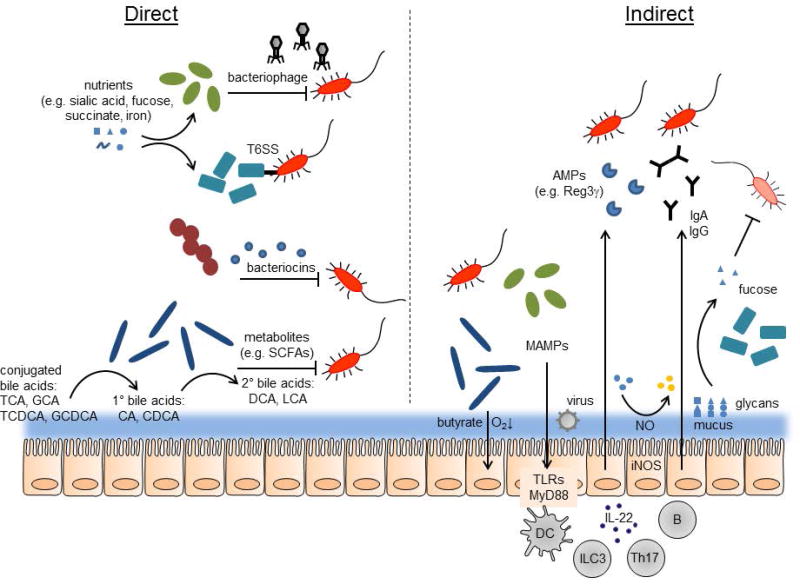FIGURE 1.
Direct and indirect mechanisms of colonization resistance. Direct mechanisms (left): Symbiotic bacteria scavenge nutrients that would otherwise be available to pathogens (red, with flagella). Bacteriophages, type 6 secretion systems (T6SS), and bacteriocins may target and kill pathogens. Products of bacterial metabolism, such as short-chain fatty acids (SCFAs), can inhibit pathogen growth. Symbiotic bacteria produce enzymes that convert conjugated, primary bile acids to secondary bile acids, which can kill some pathogens. Indirect mechanisms (right): symbionts produce butyrate which can lower oxygen concentration by stimulating host epithelial cell metabolism. Microbe-associate molecular patterns (MAMPs) produced by bacteria and viruses stimulate host innate immunity via TLRs and MyD88, on epithelial cells directly or dendritic cells (DCs). ILC3 and Th17 cells can be activated to produce IL-22, which promotes secretion of AMPs (antimicrobial peptides) such as Reg3g from epithelial cells. B cells produce IgA and IgG antibodies, which can target bacteria in the lumen. Mucus production is stimulated by bacteria, and the mucus is decorated with various glycans. These can be cleaved by bacterial enzymes and the free sugars, such as fucose, can suppress pathogen or pathobiont virulence. The host can also oxidize sugars via reactive nitrogen species produced by inducible nitric oxide synthase (iNOS).

